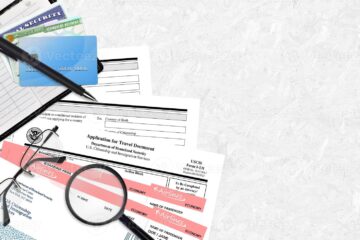In an increasingly data-centric world, numbers like 5980.27 3726.71 may not seem significant at first glance, but their importance unfolds when considered within the right context. These figures can hold various meanings across multiple industries, representing anything from financial indicators and performance metrics to specific technical parameters and compliance standards. This article explores the diverse implications and uses of 5980.27 and 3726.71, highlighting their relevance in professional settings and illustrating how they inform decision-making processes across different sectors. Understanding the Significance of 5980.27 and 3726.71 Across Various Fields
The numbers “5980.27” and “3726.71” hold distinct meanings across multiple sectors, particularly in finance and law. In the financial realm, these figures can represent critical data points, while in legal contexts, they may correspond to regulations, case numbers, or penalties.
Financial Context
Within finance, Number like 5980.27 3726.71 often denote specific transaction amounts, interest rates, or financial forecasts. For example, “5980.27” might indicate an income figure, while “3726.71” could represent expenses or tax values. Financial analysts frequently engage with such figures in balance sheets, income statements, and economic reports. By examining these numbers, professionals can gauge financial health, identify trends, and formulate strategic decisions.
Legal Implications
In the legal arena, these numbers can signify statutes, case references, or contractual obligations. For instance, “5980.27” might refer to a specific legal provision, while “3726.71” could indicate a penalty or a clause within a contract. Legal experts utilize these figures to navigate complex regulations, ensuring compliance and accurately interpreting legal documents.
Business and Statistical Insights
In business and data analysis, “5980.27” and “3726.71” could serve as key performance indicators (KPIs) or statistical metrics essential for informed decision-making. For instance, “5980.27” may reflect sales figures or market share, whereas “3726.71” could relate to production costs or customer data. Understanding these figures is vital for organizations aiming to optimize their operations and drive growth.
Understanding the Importance of 5980.27 3726.71 Across Disciplines

The numbers “5980.27” and “3726.71” hold significant relevance across various professional fields, each offering unique insights into economic trends and performance metrics. In finance, analysts leverage these figures to forecast potential investment returns and evaluate market performance, as they often reflect key economic indicators. Meanwhile, legal professionals regard these numbers as essential regulatory benchmarks crucial for ensuring compliance with relevant laws and industry standards. Business analysts, too, utilize these figures to measure operational performance and inform strategic decisions related to expenses, revenues, and overall profitability.
By integrating perspectives from finance, law, and business analysis, a comprehensive understanding of these figures emerges. This multidisciplinary approach not only enhances risk management but also helps identify opportunities within respective fields. Viewing “5980.27” and “3726.71” through these various lenses amplifies their significance, ultimately leading to improved strategic decision-making and operational efficiency across industries.
The Financial Significance of5980.27 3726.71
In the financial sector, the numbers “5980.27 3726.71” are crucial, as they may represent significant data points like stock index levels, economic indicators, or specific financial ratios. For example, if linked to a stock index, these figures could denote a historical high or an important benchmark that traders and investors monitor closely while making buy or sell decisions. Furthermore, they might indicate critical resistance or support levels in market analysis, influencing financial strategies and investment decisions.
Recognizing the relevance of 5980.27 3726.71 empowers finance professionals to refine their decision-making processes. This understanding allows them to tailor their strategies to align with prevailing market trends and movements. Consequently, this awareness not only facilitates navigating the complexities of trading but also leads to more informed investment choices, ultimately optimizing performance and helping achieve financial goals.
Understanding the Compliance Importance of 5980.27 3726.71
While the figures “5980.27 3726.71” may seem unrelated at first glance, their combined significance is essential for professionals navigating complex regulatory environments. These numbers often serve a crucial role in formulating comprehensive compliance strategies that inform key operational decisions.
In corporate compliance, adhering to regulations associated with 5980.27 3726.71 is vital for businesses operating under stringent legal and financial standards. These figures may represent thresholds established by regulatory agencies, ensuring ethical practices and legal conformity. Meeting these benchmarks safeguards organizations from penalties, legal disputes, and operational disruptions. Thus, grasping the relevance of these numbers within the broader regulatory framework is critical for maintaining legal integrity and ensuring smooth business operations.
Additionally, in product development, aligning with technical specifications like “5980.27” and “3726.71” is vital for upholding safety and quality standards. These figures can define essential performance, durability, and safety criteria for products. Failure to meet these requirements can lead to reputational damage, legal actions, or product recalls. By integrating these standards into their engineering and design processes, companies can bolster their credibility, enhance customer trust, and ensure regulatory compliance.
Implications of 5980.27 3726.71 in Legal Contexts

The numbers “5980.27” and “3726.71” carry significant weight in regulatory and legal documents, serving as critical references for specific clauses and stipulations. In a legal setting, “5980.27” may refer to a particular section within a legal document or a relevant case precedent essential for interpreting contemporary legal practices. This reference can be vital for attorneys and legal professionals aiming to align their actions with established laws.
Conversely, “3726.71” could denote a regulation embedded within a broader statutory framework, playing a crucial role in compliance and governance. Understanding these numbers is imperative for individuals and organizations navigating complex legal landscapes, as they provide essential guidance for adhering to rules and fulfilling legal obligations.
By recognizing the significance of “5980.27” and “3726.71,” legal practitioners can enhance their understanding and application of relevant legislation, ensuring their practices remain compliant with current laws. This knowledge ultimately fosters ethical conduct and operational integrity across various sectors, reinforcing the importance of due diligence in legal affairs.
Understanding the Importance of 5980.27 3726.71

The figures “5980.27” and “3726.71” extend beyond their numerical value, symbolizing crucial thresholds and compliance standards across various industries. Their interpretation shifts depending on context, highlighting their role in maintaining operational integrity.
In taxation and finance, these numbers may correlate with specific tax codes or minimum income thresholds essential for individuals and businesses. For example, “5980.27” could represent a mandated tax obligation outlined by local or national regulations, significantly influencing financial strategies and reporting. Financial professionals, including accountants and consultants, must grasp the significance of these figures to help clients meet tax responsibilities while maximizing available credits and deductions.
In industrial sectors, 5980.27 3726.71 often serve as benchmarks for regulatory compliance. These figures may define the performance standards that products need to meet to comply with quality and safety regulations prior to consumer release. Adhering to these standards not only enhances product safety and reliability but also mitigates potential legal liabilities.
Furthermore, in materials science and engineering, these figures may relate to specific durability or tolerance metrics for systems and materials. For instance, materials must demonstrate qualities like heat resistance or tensile strength to qualify for critical applications. Compliance with these standards is vital, especially in high-stakes industries such as aerospace, automotive, and construction, where safety and longevity are paramount.
By understanding the varied applications and implications of “5980.27” and “3726.71,” professionals across sectors can improve their strategic decision-making and operational efficiency, ensuring compliance and promoting innovation.
The Role of 5980.27 and 3726.71 in Business Analysis
In the realm of statistical analysis, figures such as “5980.27” and “3726.71” serve as crucial data points that reflect essential metrics within a business context. These numbers can encapsulate vital information, including sales figures, market share, or customer acquisition costs, providing a solid foundation for businesses to base their strategies on.
Data Interpretation and Strategic Planning
Accurate interpretation of these figures is paramount for organizations aiming to make informed and effective decisions. For example, “5980.27” may denote monthly revenue, while “3726.71” could signify operational expenses. By analyzing these data points, businesses can better understand their financial landscape, allowing them to streamline operations, cut unnecessary costs, and ultimately enhance profitability.
Understanding the implications of such numbers enables businesses to navigate market dynamics more effectively and tailor their strategies to achieve sustained growth.
Also Read: 726-210-2473
Final Words
The numbers 5980.27 3726.71 carry substantial weight in various professional fields, impacting decision-making and strategy. In finance, these figures often represent crucial metrics like monthly revenues and operational costs, guiding businesses in forecasting and budgeting. Understanding their significance can lead to more informed financial strategies and enhanced profitability.
In legal contexts, 5980.27 and 3726.71 may correspond to specific regulatory benchmarks or compliance standards, ensuring organizations meet essential requirements and avoid penalties. Their relevance extends into compliance and governance, where these numbers serve as indicators of operational integrity.
Moreover, in statistical analysis, 5980.27 and 3726.71 could represent key performance indicators, offering insights into market trends and consumer behavior. By recognizing the diverse implications of these figures, professionals can make better decisions, optimize operations, and foster innovation across various sectors. Ultimately, understanding 5980.27 and 3726.71 is essential for navigating complexities in finance, law, and business analysis, contributing to long-term success.
FAQs
What do the numbers 5980.27 and 3726.71 represent?
These figures can represent financial metrics, regulatory codes, or statistical data points across various industries.
How are 5980.27 and 3726.71 used in financial analysis?
In finance, these numbers may indicate key performance indicators, such as revenue, expenses, or economic forecasts.
What industries commonly utilize 5980.27 and 3726.71?
These figures are often found in finance, law, compliance, and business analytics.
Are 5980.27 and 3726.71 associated with specific regulations?
Yes, they may correspond to regulatory benchmarks or compliance standards necessary for various industries.
How can businesses benefit from understanding these figures?
By analyzing 5980.27 and 3726.71, businesses can make informed decisions, optimize operations, and improve profitability.
What role do 5980.27 and 3726.71 play in statistical analysis?
They may represent data points that inform key metrics like sales performance, market share, or customer acquisition costs.
Can these numbers be linked to tax obligations?
Yes, 5980.27 and 3726.71 may refer to specific tax codes or income thresholds relevant to individuals and businesses.
What implications do 5980.27 and 3726.71 have in legal contexts?
These numbers can serve as references for clauses in legal documents or as compliance indicators for regulatory frameworks.
How can professionals ensure they are using these figures correctly?
Understanding the context in which 5980.27 and 3726.71 are used is crucial for accurate interpretation and application.
Where can I find more information on 5980.27 and 3726.71?
Additional insights can often be found in industry-specific reports, financial analyses, or regulatory documentation.
“Stay updated and alerted by staying connected.” Twinkle Crest



